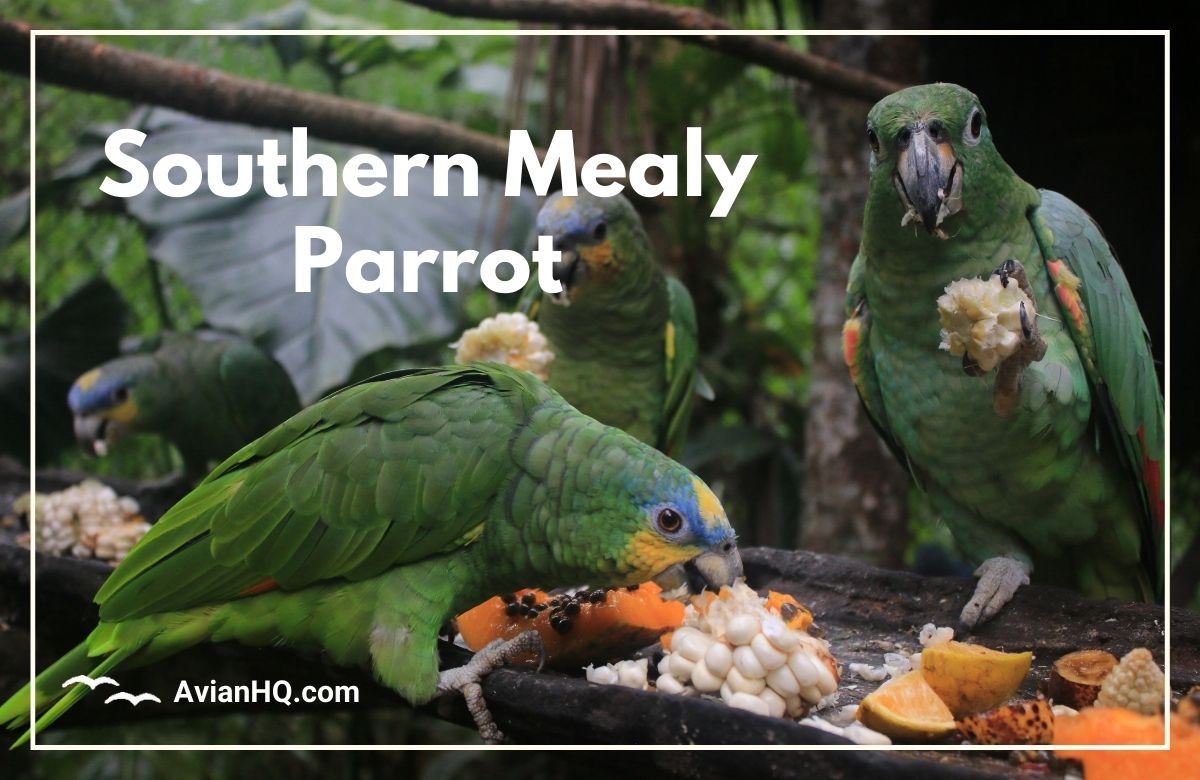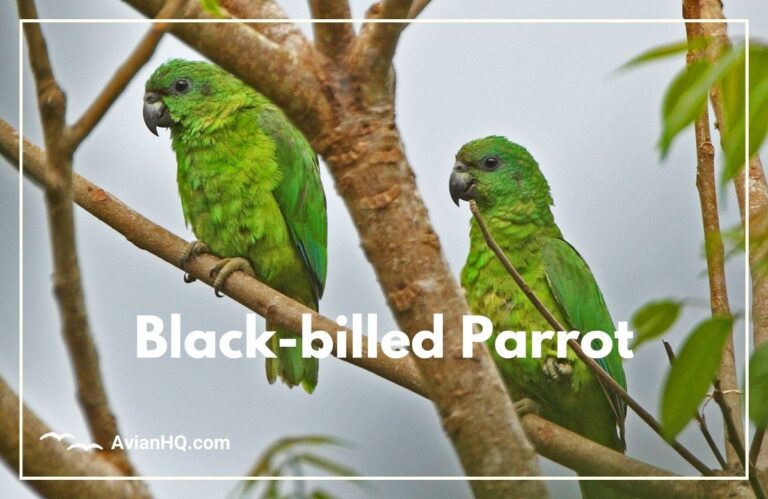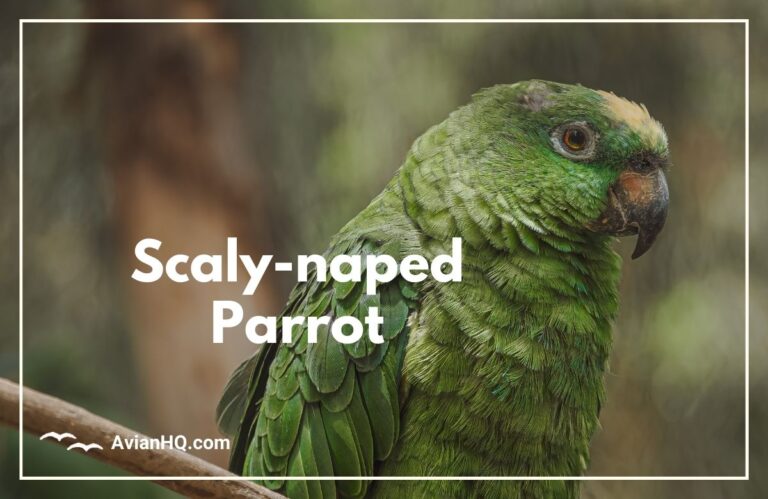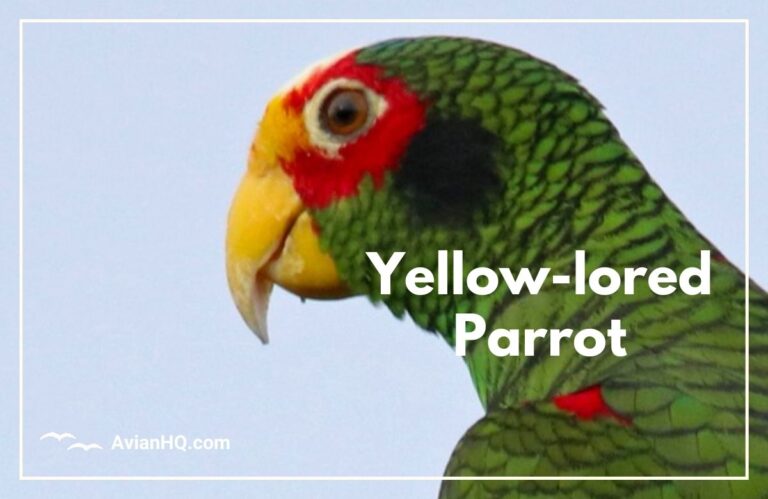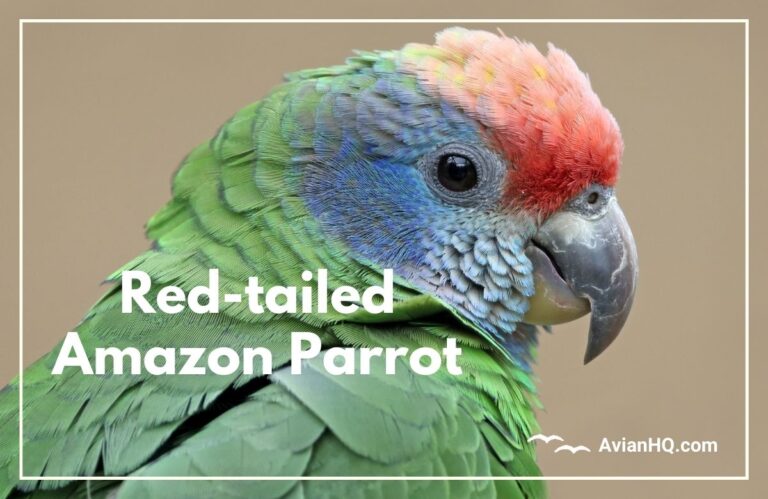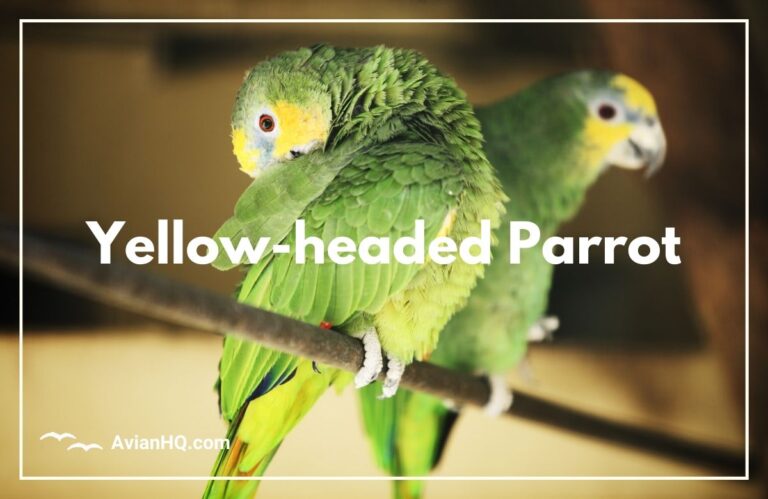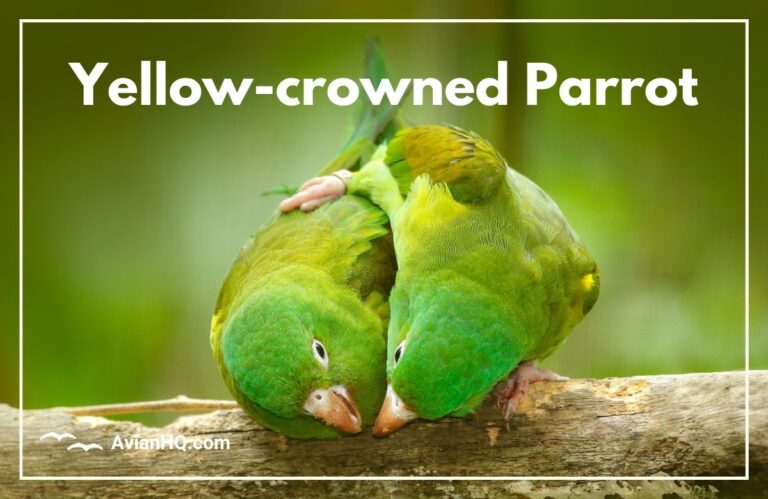Southern Mealy Parrot (Amazona farinosa)
The Southern Mealy Amazon is one of the largest and most magnificent parrots in the Americas. With it’s vibrant green plumage and flour-like white markings, this tropical bird cuts an impressive figure in the rainforest canopy.
“The Southern Mealy Amazon parrot is a striking tropical bird that thrives in Central and South American rainforests.”
As you watch a Southern Mealy Amazon preening high up in a tree, you’ll be awed by it’s bright colors and large size. Reaching up to 16 inches (40 cm) long and over 1.5 pounds (700 grams), it dominates the other parrots it lives beside.
The Southern Mealy Amazon gets it’s name from the pale “mealy” appearance caused by white edges on the feathers covering it’s back and neck. When seen up close, it lives up to it’s scientific name Amazona farinosa, meaning ‘floury amazon’.
This parrot makes it’s home in lowland humid rainforests from Panama down to Bolivia and Brazil in South America. Living in tall canopy trees near forest clearings and edges, it blends in well with it’s green surroundings.
Outside of the breeding season, Southern Mealy Amazons form large communal roosts, with hundreds of individuals gathering to sleep in a few select trees. At dawn and dusk, their loud squawks reverberate through the rainforest.
Though still common in parts of it’s range, Southern Mealy Amazon numbers have declined due to trapping for the pet trade and rainforest habitat loss. Their gentle nature, intelligence and talking ability have made them popular on the exotic pet market, where they are often traded illegally.
Saving rainforest habitats and limiting the wild bird trade are key to protecting Southern Mealy Amazon populations into the future. With conservation support, these magnificent green parrots will continue thriving for decades to come.
Scientific Classification and Taxonomy
The Southern Mealy Amazon’s scientific name is Amazona farinosa. This species belongs to the large, Neotropical genus Amazona, commonly known as the amazon parrots.
It was first scientifically described in 1780 by the French naturalist Georges-Louis Leclerc, Comte de Buffon, based on a specimen from Cayenne, French Guiana. Buffon gave vivid descriptions but did not allocate a formal binomial name.
In 1783, the Dutch zoologist Pieter Boddaert coined the species’ current scientific name Psittacus farinosus in his catalog of illustrations from Buffon’s work. The genus Amazona was later introduced by the French ornithologist René Primevère Lesson in 1830.
Originally, the Southern Mealy Amazon was considered the same species as the Northern Mealy Amazon (Amazona guatemalae). However, in 2012 a genetic study published in the journal The Condor led scientists to officially recognize them as separate species.
No universally accepted subspecies of the Southern Mealy Amazon are currently recognized. In the past, some experts had proposed up to three subspecies (A. f. farinosa, A. f. chapmani, A. f. inornata) but more data is needed to validate these classifications.
The species epithet farinosa is derived from Latin, meaning “powdery” or “covered in flour”. This is an apt description of the Southern Mealy Amazon’s distinctive pale feather markings.
Physical Description
The Southern Mealy Amazon is one of the larger amazon parrots, reaching up to 16 inches (40 cm) in total length. It weighs between 1.2 to 1.5 pounds (540 to 700 grams) on average.
Its plumage is predominantly bright green. The feathers on the back of it’s neck and nape have pale white edges, giving the species it’s classic “mealy” appearance.
When perched, it has a relatively short and square-tipped tail typical of amazon parrots. The underside of the tail is more yellow compared to the green upper-side, creating a two-toned look.
The Southern Mealy Amazon’s wings have blue-black trailing edges. A vibrant red wing speculum on the bend of the wings is visible in flight. Some individuals may show a small yellow patch on the crown.
The facial area features bare white skin around the eyes, a horn-colored beak typical of amazons, and dark grey legs and feet. Immature birds have similar plumage but with brown irises instead of the red eyes seen in adults.
The Southern Mealy Amazon resembles but is larger than the Yellow-crowned Amazon. It has more extensive pale feather markings, a broader white eye-ring, and brighter red on the wing speculum.
Its vocalizations are also very different – raspy and quarrelsome compared to the whistled call of the Yellow-crowned. These features help distinguish the two species in the wild.
Geographic Range and Habitat
The Southern Mealy Amazon is endemic to Central and South America. It’s range extends from eastern Panama and Colombia down through Ecuador and Peru to Bolivia, Brazil, and the Guianas in northeastern South America.
This species inhabits lowland humid rainforests up to elevations of 3,000 feet (915 meters). It frequents both pristine and secondary forests.
Southern Mealy Amazons are also found along forest edges, in trees bordering rivers and streams, and in wooded plantations or orchards. They appear to avoid drier deciduous woodlands.
Within their forest habitat, these parrots forage high in the upper canopy layer. At night they gather in large communal roosts, often picking a few select emergent trees that offer safety in numbers.
Though mostly sedentary year-round, some Southern Mealy Amazon populations may migrate short distances to track the fruiting season of certain preferred food trees. Their habitat tolerance helps them flourish across much of the Neotropics.
Diet and Feeding Behavior
The diet of wild Southern Mealy Amazons consists mainly of fruits, nuts, seeds, berries, buds, blossoms and some leafy matter.
They favor figs, palm fruits and other soft, pulpy fruits. Their strong beaks and tongues are adapted for cracking hard nuts and seeds.
This species forages quietly high up in rainforest canopies, often in mated pairs. At times large flocks converge on fruiting trees, where dozens of birds may feed noisily together.
Southern Mealy Amazons have sometimes been considered crop pests, as they will feed on cultivated corn and other grains. But most of their wild diet comes from native rainforest plants rather than human agriculture.
In captivity, these amazons should be fed a varied diet including pellets, vegetables, sprouted seeds and appropriate fruits. A nutritious diet is key to keeping captive Southern Mealy Amazons healthy and active.
Reproduction and Breeding
Southern Mealy Amazons reach sexual maturity between ages 3-4. They form lifelong monogamous bonds, pairing up with a single mate for breeding.
The breeding season lasts from November through March. Nests are made in tree cavities, either natural hollows or old woodpecker holes.
The female typically lays 2-4 white eggs. She then incubates them alone for 24-27 days while the male brings her food.
After hatching, both parents feed the chicks with regurgitated food. The young fledge at 9-10 weeks old but continue to be fed by their parents for some time after leaving the nest.
In captivity, Southern Mealy Amazons can be prolific breeders when provided with proper nest boxes. Caution must be taken though to ensure captive-bred young are not sold illegally.
Behavior and Ecology
Southern Mealy Amazons live in pairs or small family groups of up to 20 birds. Outside breeding season, hundreds roost together communally.
They forage quietly but can become very vocal at dawn and dusk, making loud screeches and squawks. Theircalls help maintain contact and mark territory.
This species interacts peacefully with other parrot species while feeding and roosting. They may accumulate into larger mixed flocks when food sources are abundant.
Southern Mealy Amazons are intelligent, playful and affectionate birds. Their popularity in aviculture stems from their gentle, trusting nature combined with an ability to mimic speech.
In the wild, they exhibit complex social behaviors including long-term pair bonds, cooperative breeding and information sharing about food locations. Protecting these behaviors contributes to ecological health.
Conservation Status
The Southern Mealy Amazon is currently classified as Least Concern on the IUCN Red List of Threatened Species. It’s large range and population size provide resilience.
However, habitat loss in sections of it’s range and trapping for the pet trade have caused some population declines. There is now an increasing threat level facing certain populations.
Across it’s range, habitat loss from deforestation remains the largest concern. Additionally, wild-caught Southern Mealy Amazons are still illegally smuggled into the United States and other countries.
In areas where they feed on crops, persecution by farmers can pose local threats. They are also hunted for food in some South American countries, despite legal protection.
Maintaining healthy rainforest ecosystems and enforcing trade prohibitions are key conservation priorities for the Southern Mealy Amazon’s future security.
Cultural Significance
The Southern Mealy Amazon is popular in the exotic pet trade thanks to it’s beautiful colors, gentle demeanor and ability to talk. This has fueled illegal trapping and smuggling.
In captivity, this species is regarded as one of the calmest and most affectionate amazon parrots. With proper care and training, they bonds strongly with owners and can learn vocabulary of over 100 words.
Across parts of Central and South America, locals have traditionally hunted various parrot species including the Southern Mealy Amazon for food and feathers. Though now illegal, such harvesting still occurs.
As flagship rainforest species, parrots like the Southern Mealy Amazon help draw attention and funding towards protecting tropical habitats being lost to deforestation. Ecotourism relying on vibrant wildlife also brings economic incentives for conservation.
Ultimately, the Southern Mealy Amazon’s future relies on preserving intact rainforest ecosystems. This benefits not just parrots but all wildlife sharing these spectacular habitats.
Conclusion
The Southern Mealy Amazon is one of the Amazon basin’s most spectacular avian residents. As one of the larger members of the diverse amazon parrot genus, it plays a vital role in seed dispersal and rainforest ecology.
Its vibrant colors and gregarious nature have unfortunately made it a target for the illegal wildlife trade. Habitat loss also threatens key populations across Central and South America.
Increased legal protection and habitat conservation efforts are still needed to ensure the long-term survival of wild Southern Mealy Amazon populations.
With proper management, these iconic green parrots will hopefully continue flourishing for centuries, delighting bird enthusiasts and nature lovers with their beauty, intelligence and energetic squawks echoing through Neotropical jungles.

